Global gold exploration: Eight companies on the move
With gold’s reputation as a store of value and recent gold-focused merger and acquisition activity, there is renewed investor interest in companies active in the exploration space.
American Creek Resources
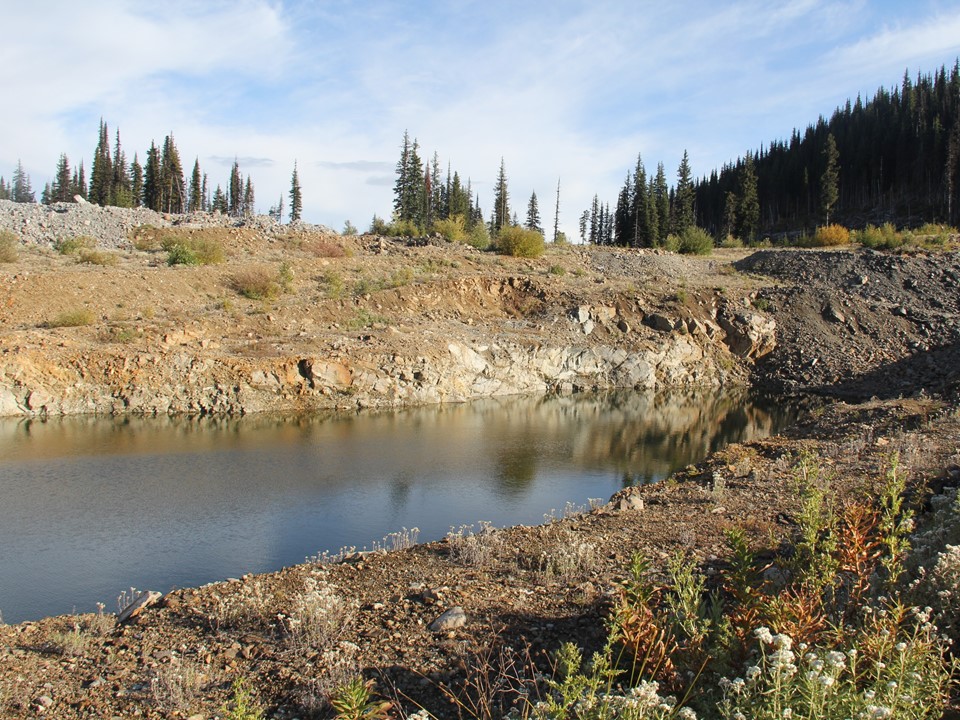
American Creek Resources (TSXV: AMK; US-OTC: ACKRF) holds a 20% carried interest in the Treaty Creek gold-silver project in northwest B.C.’s Golden Triangle. Tudor Gold (TSXV: TUD) holds a 60% interest in the project and is the operator while Teuton Resources (TSXV: TUO) also owns a 20% share. Both American Creek and Teuton’s interests are carried until they receive a production notice for the project – they would then be required to contribute their 20% shares of development costs.
In March, Tudor announced an initial resource estimate for the Goldstorm and Copper Belle zones at Treaty Creek. Total resource figures feature 815.7 million measured and indicated tonnes at 0.66 gram gold per tonne, 3.6 grams silver per tonne and 0.06% copper that contain 19.4 million gold-equivalent ounces. Inferred resources add 311.7 million tonnes grading 0.72 gram gold, 4 grams silver and 0.05% copper and host an additional 7.9 million gold-equivalent ounces.
The pit-constrained measured and indicated resource includes 609.8 million tonnes grading 0.72 gram gold-equivalent, host to 14.2 million gold-equivalent ounces. Additional in-pit inferred resources stand at 139.4 million tonnes at 0.77 gram gold-equivalent, containing 3.5 million gold-equivalent ounces.
This year, Tudor plans to continue drilling Goldstorm to define the limits of its component zones with additional work scheduled for the Eureka and Perfect Storm areas.
Tudor Gold’s initial metallurgical test work suggests “excellent” gold recoveries to a gravity and flotation concentrate with no deleterious elements, according to the company.
The 179-sq.-km property borders Seabridge Gold’s (TSX: SEA; NYSE: SA) KSM project to the southwest and Pretium Resources’ (TSX: PVG; NYSE: PVG) Brucejack property to the southeast.
In the Kamloops mining district in south-central B.C., American Creek owns the Austruck-Bonanza gold-silver-copper project. The property is in the southern extension of the prospective Quesnel Trough.
At the end of February, American Creek completed the spinout of the Dunwell property in the Golden Triangle, among other mineral assets to Stinger Resources (TSXV: STNG) in exchange for 45 million shares of Stinger. These shares were distributed to American Creek shareholders on a pro-rata basis.
American Creek Resources has a C$121.3 million market capitalization.
Goliath Resources
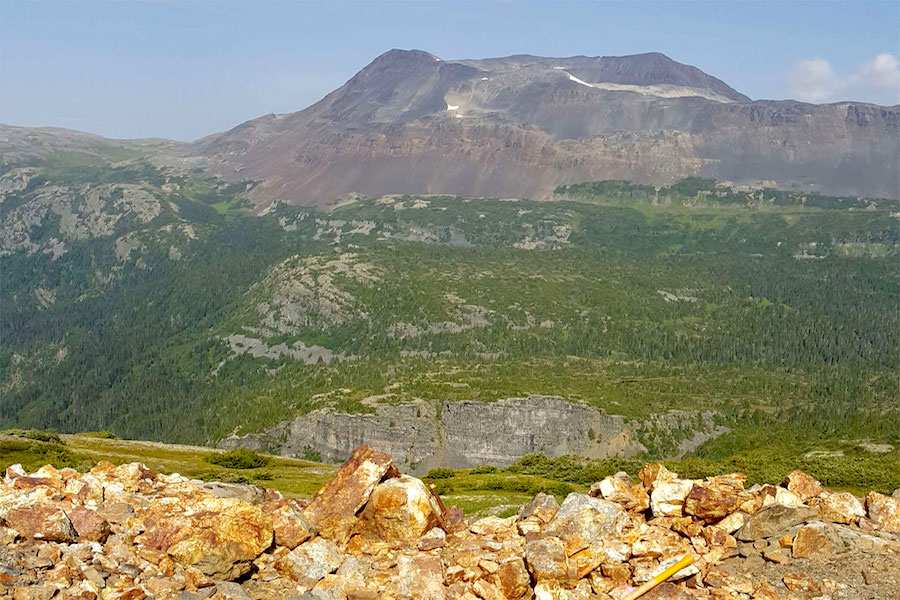
Goliath Resources (TSXV: GOT; US-OTC: GOTRF) is a junior explorer with a portfolio of properties in B.C.’s Golden Triangle and in Quebec’s Abitibi greenstone belt. The company may earn up to a 100% interest in the Golddigger and Lucky Strike projects in the western province and holds the Nelligan East and West properties in Quebec.
At 238.6 sq. km, Golddigger is 30 km southeast of Stewart and lies along the Eskay Rift. The 4-sq.-km Surebet zone discovery on the site is approximately 8 km southwest of Fury Gold Mines’ (TSX: FURY) Homestake Ridge project and lies within a shear zone. Surebet is made up of northwest to southeast-trending structures with gold-silver mineralization in an alteration halo. Approximately 1,000 metres of its strike is exposed at surface as well as 500 metres of vertical relief with an inferred down-dip span of 1,000 metres. Goliath expects this zone to cover 2 km of strike.
The exploreco has defined 11 drill targets along the 1,000-metre strike of Surebet, with an additional target identified at the East Splay zone, approximately 200 metres away.
In November, Goliath announced channel sample assays from the Main and Upper Main Waterfall zones at Surebet. Highlights from the Main Waterfall area include 15.1 metres of 7.64 grams gold per tonne, 382 grams silver per tonne, 0.04% copper, 0.83% lead and 0.52% zinc (13.05 grams gold-equivalent). In 2020, Upper Main Waterfall returned a 10-metre interval of 14.11 grams gold.
Both of these areas remain open and are now ready for drilling – Goliath is planning to complete an initial drill program at Surebet this year.
In March, Goliath completed a C$2.9 million non-brokered financing with Eric Sprott and Crescat Capital – Sprott and Crescat now own 8.3% and 9.9% of the company.
The company’s 315.1-sq.-km Lucky Strike property in B.C. is south of the Golden Triangle and hosts an outcropping gold-copper-moly porphyry system. Highlights from 2019 drilling included 20.7 metres of 0.39 gram gold-equivalent. Results from last year’s geochemical program suggest a “large porphyry system” at the site.
The Nelligan East and West holdings are in the Chibougamau-Chapais mining camp. Nelligan East’s western boundary is 8 km east of the past-producing Joe Mann mine, where Dore Copper (TSXV: DCMC; US-OTC: DRCMF) may earn up to a 100% interest. Nelligan West is 30 km from the Nelligan gold project under an earn-in to joint venture agreement between Iamgold (TSX: IMG; NYSE: IAG) and Vanstar Mining Resources (TSXV: VSR; US-OTC: VMNGF).
Goliath Resources has a C$31 million market capitalization.
New Gold
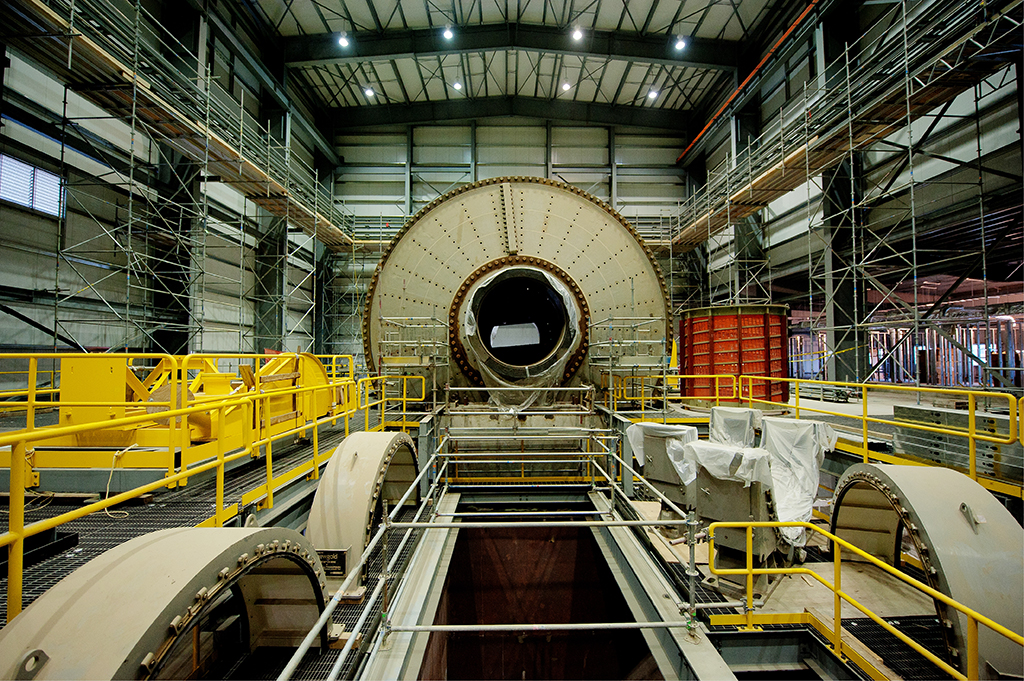
New Gold (TSX: NGD; NYSE: NGD) is a two-asset gold and copper producer, with its Rainy River open-pit mine in Ontario and the New Afton block cave in British Columbia.
This year, Rainy River is expected to generate 275,000 to 295,000 gold-equivalent oz. at all-in sustaining costs of $1,125 to $1,225 per gold-equivalent ounce. New Afton is expected to generate 52,000 to 62,000 oz. of gold and 56 million to 66 million lb. of copper (165,000 to 195,000 gold-equivalent oz.) at AISCs of $1,225 to $1,325 per gold-equivalent ounce. These numbers would bring total expected output for 2021 to 440,000 to 490,000 gold-equivalent ounces.
Over the next four years (by 2025), the miner expects to grow its production to the 575,000 gold-equivalent oz. a year level as the Rainy River underground and New Afton C-zone come on-line. Company-wide AISCs are expected to trend down to approximately $800 per gold-equivalent oz. by 2025. New Gold expects this production schedule to generate an estimated $1.5 billion in free cash flow over the next five years, assuming $1,800 per oz. gold, $3.25 per lb. copper and $20 per oz. silver.
At Rainy River, the focus this year is on underground decline development to the Intrepid zone, with the first ore level accessed in the first quarter, and on refining the underground mining plan ahead of first underground production that is scheduled for 2022. An economic study is also underway to evaluate a stand-alone underground mine at the site that could extend the mine life beyond 2028. Exploration at Rainy River is focused on the North East trend target, where two coincident geochemical and geophysical anomalies have been defined within a 15 km structural corridor.
First production from the deeper New Afton C-zone is expected by the second half of 2023. This year, the company expects to spend $80 to $110 million on growth capital at the mine – the majority of this spend will go towards C-zone development and tailings facility construction and stabilization. A 10,000-metre exploration program at the Cherry Creek area, 3 km from the New Afton mill, started last year, with over 6,500 metres completed in the fourth quarter of 2020, targeting near-surface epithermal and porphyry-style mineralization.
In March, the producer announced a $24.8 million investment in Harte Gold (TSX: HRT; US-OTC: HRTFF), giving it a 14.9% stake in the Ontario focused single-asset producer.
New Gold also has an 8% gold stream on the first 280,000 gold ounces produced from Artemis Gold’s (TSXV: ARTG) Blackwater project, declining to 4% thereafter.
New Gold has a C$1.5 billion market capitalization.
Prime Mining
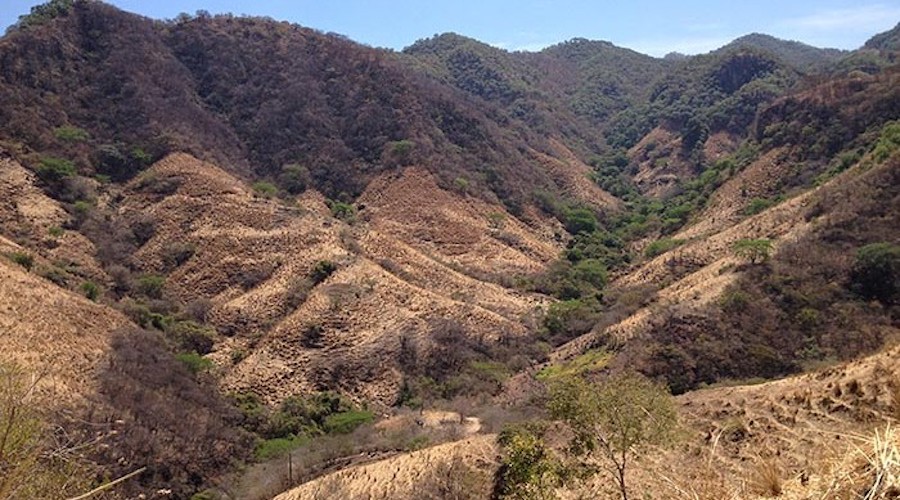
Prime Mining (TSXV: PRYM; US-OTC: PRMNF) is working to advance the 63-sq.-km Los Reyes low-sulphidation epithermal gold-silver Los Reyes project in Mexico’s Sinaloa state into production.
Last April, Prime published an updated pit-constrained oxide resource for the site, based on a heap leach processing scenario, with 19.8 million measured and indicated tonnes grading 1 gram gold per tonne and 26.15 grams silver per tonne (1.31 gram gold-equivalent), containing 833,000 gold-equivalent ounces. Inferred resources add 7.1 million tonnes at 0.78 gram gold and 29.95 grams silver (1.14 gram gold-equivalent) for a further 261,000 gold-equivalent ounces.
The resource remains open with an additional eight to ten high-grade unexplored discoveries at the site. Over 17.5 km of mineralized strike has been outlined at the project to date, 40% of this strike has been explored to date.
In mid-March, Prime announced that it had filed an application for an additional 75 sq. km of mineral rights, the El Rey claim block, that adjoins the eastern and northeastern boundaries of Los Reyes.
Also in March, the company released initial results from a 15,000-metre diamond drill program at Los Reyes. Assays from the Guadalupe East area included 20.1 metres of 3.25 grams gold and 380 grams silver at approximately 320 metres below the surface as well as 3.8 metres of 3.69 grams gold and 305.1 grams silver from the San Nicholas vein, below the resource. Mapping and sampling at the Mina 20/21 area also discovered a historic mining zone. The chip sampling returned a number of mineralized intervals, including 3 metres of 29.8 grams gold and 1,132 grams silver.
Five drills are working at the site. Prime’s exploration strategy includes upgrading the inferred resource with 1,500 metres of shallow drilling; expanding the resource along strike and down-dip with 3,500 metres of drilling; and defining new targets in unexplored areas – 5,000 metres of drilling is underway. The company has also completed trenching to infill and grow the resource and is completing 3,500 metres of surface trenching to outline new targets.
Past operators spent over $20 million on exploration and engineering at the site over a 25 year period.
Prime Mining has a C$249 million market capitalization.
Tanzanian Gold
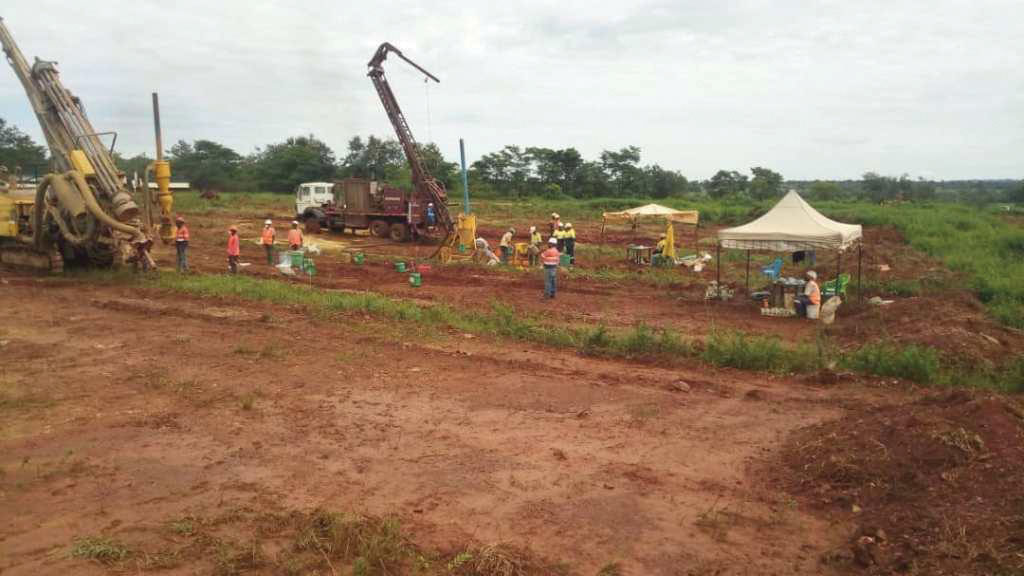
Tanzanian Gold (TSX: TNX; NYSE: TRX) is derisking and advancing the Buckreef gold project in Tanzania through the scale-up of an operating oxide plant at the site while also completing a feasibility for underlying sulphides.
The company expects to expand the plant from its current pilot run rate of five tonnes per hour to 40 tonnes per hour in the next 12 months, to reach a gold production rate of 15,000 to 20,000 oz. a year.
Longer term, Tanzanian Gold is looking to establish a significant sulphide operation at Buckreef, with feasibility study results expected in the next 12 to 18 months.
In February, the company released initial metallurgical test results on the sulphide component of Buckreef – diamond core samples grading between 0.54 gram and 19.4 grams gold suggest gold recoveries of between 85.3% and 95.4%. The proposed flowsheet includes crushing, grinding and flotation, regrinding and cyanidation to produce dore.
The Buckreef deposit hosts measured and indicated resources of 35.9 million tonnes grading 1.77 grams gold per tonne, containing 2 million gold oz. and an inferred resource of 17.8 million tonnes at 1.11 grams gold, for a further 635,540 ounces.
Mineralization at the Buckreef deposit has been traced over 1,200 metres of strike at the Main zone and to depths of over 500 metres. Tanzanian Gold says it sees considerable exploration upside at the site.
Buckreef lies in north-central Tanzania, 40 km southwest of the town of Geita, and within the Archean-age Lake Victoria Greenstone belt. The State of Tanzania operated Buckreef as an underground mine in the late 1980s. Barrick Gold’s (TSX: ABX; NYSE: GOLD) Bulyanhulu mine and AngloGold Ashanti’s (NYSE: AU; JSE: ANG) Geita mine are within a 65 km radius.
The Tanzanian government holds a 45% interest in the project. Tanzanian Gold is the majority shareholder and operator. Buckreef is made up of a 16-sq.-km Special Mining License (SML) and 12 prospecting licenses that cover 98.2 sq. km. The SML is permitted for oxide and sulphide operations.
Over the past four months, Tanzanian Gold has announced management moves to help move the company from the explorer category to the developer and producer tiers. In February, geoscientist Andrew Cheatle was named chief operating officer and in December, Stephen Mullowney joined the company as CEO.
In February, the company closed a stock offering, for net proceeds of $19.8 million.
Tanzanian Gold has a C$220.8 million market capitalization.
Torex Gold
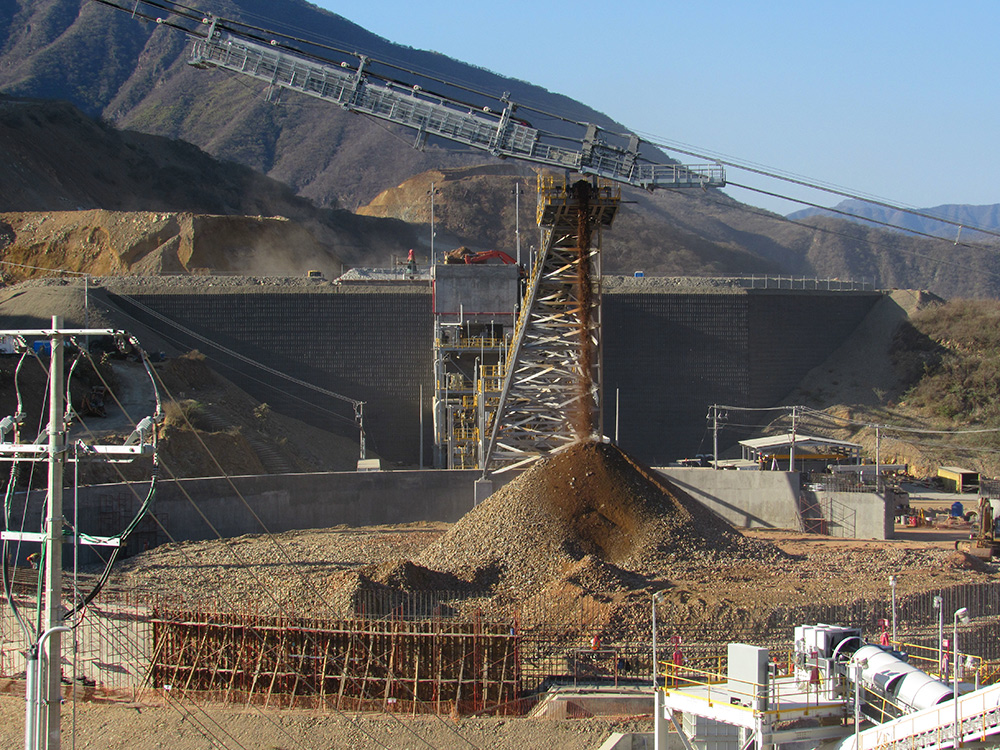
Torex Gold’s (TSX: TXG) flagship asset is the 290-sq.-km Morelos gold property in Guerrero state, Mexico. The project includes the operating El Limon Guajes mining complex, with three open pits and an underground mine, a processing plant, as well as the Media Luna underground deposit, 7 km from the plant.
This year, Torex expects El Limon Guajes to produce 430,000 to 470,000 gold oz., at all-in sustaining costs of US$920 to $970 per ounce.
The producer is working on a feasibility study for Media Luna, expected in the first quarter of 2022, ahead of first production targeted for 2024. Together with the feasibility, Torex plans to release an updated mine plan for El Limon Guajes.
The Media Luna deposit includes 12.6 million indicated tonnes grading 5.55 grams gold per tonne, for a total of 2.2 million gold-equivalent oz. and 33.5 million inferred tonnes at 4.23 grams gold, containing 4.6 gold-equivalent ounces.
As part of its Media Luna technical work, Torex is looking at both a conventional mine design as well as at a mine plan that would use the company’s proprietary Muckahi mining system. This year, the miner expects to spend $125 million to $150 million in non-sustaining capital to advance Media Luna and complete development work at El Limon Guajes, which includes a third portal to reduce underground haul distances. The majority of this year’s $90 to $100 million investment in Media Luna is intended for a 7-km tunnel and for a portal that would allow access to upper portions of the deposit from the south.
The Muckahi mining system, developed by Torex, features conveyor-based transport of broken rock from a stope to surface using an overhead monorail up ramps with an approximate incline of 30 degrees. Last year, the company successfully demonstrated that the individual system components were able to move rock. This year, Torex plans to field test the components as a single system in the upper portions of El Limon Deep.
Aside from these two mining centres, approximately 75% of Morelos remains unexplored. This year, Torex is planning to spend $2.5 million on regional exploration.
Torex Gold has a C$1.4 billion market capitalization.
Victoria Gold
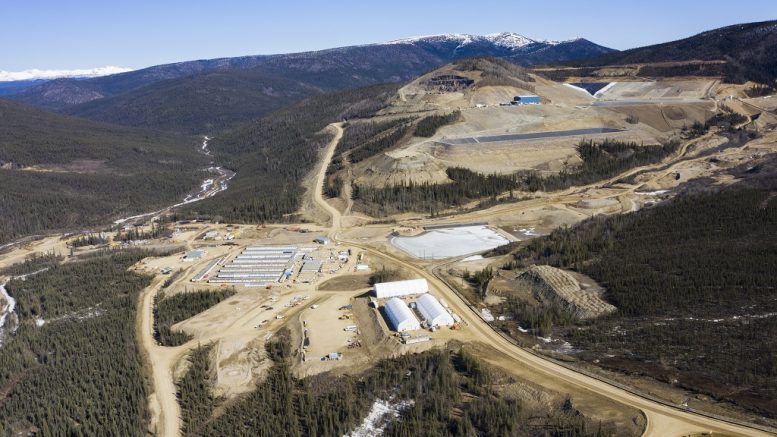
Victoria Gold (TSX: VGCX) is ramping up its Eagle gold mine in the Yukon. The heap leach mine reached the commercial production milestone in July 2020 and is expected to generate 180,000 to 210,000 oz. of gold this year at all-in sustaining costs of $1,050 to $1,175 per ounce.
As part of its “Project 250k” the company is working to grow its output to 250,000 oz. a year by 2023. Victoria is looking at options such as year-round stacking onto the leach pad, screening fines before crushing and lowering the cut-off grade and increasing the amount of material hauled directly to the leach pad. Currently there is no stacking to the Eagle leach pad between January and March due to the cold Yukon weather.
At the same time, the growing miner is also looking to extend the Eagle mine life. While a 2019 technical report outlined an operation producing over 210,000 gold oz. a year over a plus-ten-year life, Victoria has its sights set on a mine life extension out to 2040, dubbed “Project 2040.”
The Eagle mine lies within the 555-sq.-km Dublin Gulch property and is made up of the Eagle and Olive deposits. Current reserves across the two total 155 million tonnes grading 0.65 gram gold per tonne, for a total of 3.3 million gold ounces.
This year, Victoria expects to spend $12.5 million on exploration. There is potential upside for resource and reserve growth near-mine and at regional targets. The Eagle pit, planned to a depth of 350 metres, hosts mineralization to depths of up to 650 metres. Victoria is also planning to infill the Olive deposit and drilling 10,000 metres at Eagle, targeting mineralization below and around the pit.
Regional targets include Nugget and Raven (with 14,000 metres scheduled between June and October), Lynx, VBW/Falcon and Olive-Shamrock. Victoria also plans to complete trenching and collect soil samples across its property.
In December, Victoria reported drill results from Lynx, with near-surface highlights of 153.8 metres of 0.49 gram gold and 11.9 metres of 1.26 grams gold. November’s drillhole assays from Raven included 19 metres of 3.95 grams gold and 13.2 metres of 3.05 grams gold.
Victoria Gold has a C$807.6 million market capitalization.
Westhaven Gold
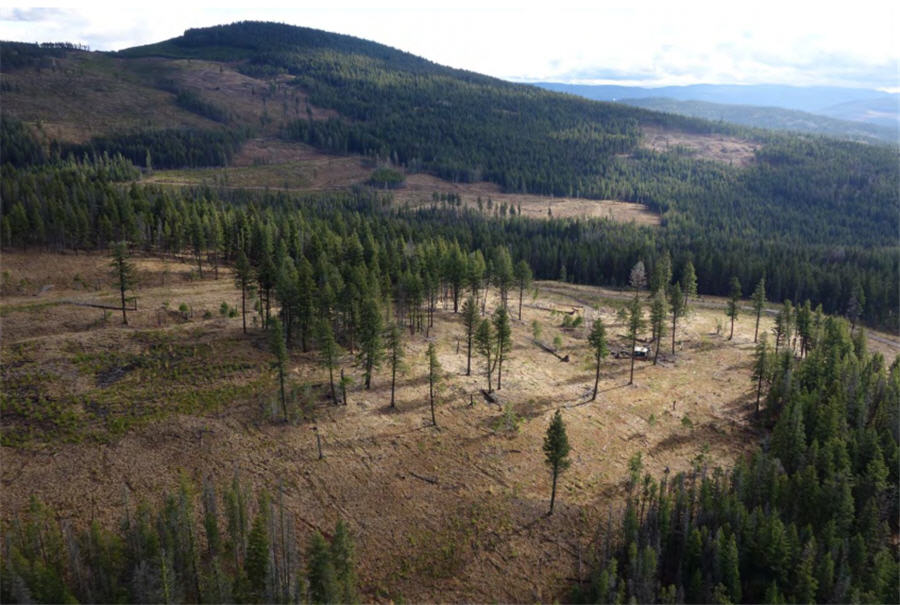
Westhaven Gold (TSXV: WHN) is exploring for gold at its 176.2-sq.-km road-accessible Shovelnose project at the southern edge of the Spences Bridge gold belt in British Columbia, 30 km south of Merritt. The company sees potential for a low-sulphidation epithermal system at the site.
Drilling completed between 2018 and 2020 has defined three major vein systems at the site associated with four areas of high-grade gold-silver mineralization. The largest, Vein zone 1, has been traced over 4 km of strike and includes the FMN, Franz and South areas; Westhaven has also hit high-grade gold at the Lear target.
In March, the company reported results from its 43,166-metre 2020 drill program at Shovelnose. Drill highlights included 6 metres of 2.36 grams gold per tonne and 98.42 grams silver per tonne from FMN; and 0.6 metre of 6.05 grams gold and 148 grams silver from Franz. At FMN (a December discovery), gold and silver has been traced over 200 metres of strike while Franz (discovered in September) has been defined over 650 metres. With a 600-metre gap between FMN and Franz, drilling is ongoing to test this strike.
The December FMN assays included 19.9 metres of 2.62 grams gold and 139.75 grams silver.
At the South zone, a 2018 discovery, drilling has hit the three gold-bearing vein zones. Drillholes completed in 2019 returned 15.5 metres of 4.8 grams gold and 61.21 grams silver and 12.7 metres of 39.31 grams gold and 133.11 grams silver. An initial resource for the South zone is expected this year.
In March, Westhaven closed a C$15 million bought deal. This year, the explorer plans to drill over 40,000 metres. This work will focus on Vein zone 1.
The company also holds the Skoonka North, Skoonka Creek and Prospect Valley projects along the 110 km Spences Bridge belt, with a total land position of 370 sq. km along the belt.
Westhaven Gold has a C$75.7 million market capitalization.
(This article first appeared in The Northern Miner)
More News
{{ commodity.name }}
{{ post.title }}
{{ post.date }}
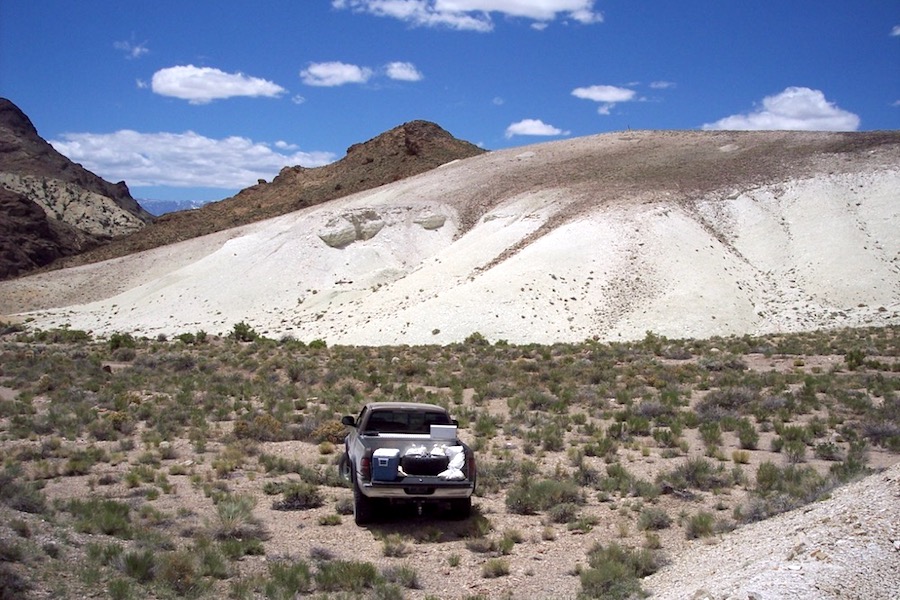
Comments
peter livingstone
Will Moneta Porcupine mines inc be in operation in the next year or two,,,, Thanking you pete